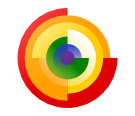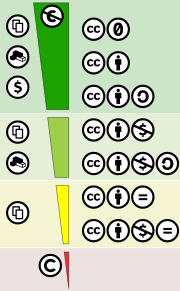OpenVentures/OpenEverything
| Work in progress, expect frequent changes. Help and feedback is welcome. See discussion page. |
Open Everything: Constructively contribute and critique the content on the page by:
This topic area Open Everything may be new to you, facilitators will monitor and answer your questions on page discussions; see 'discussions' tab in the top left of the page. Important: Your contribution will require registration for a WikiEducator account. We advise registering early in the week to ensure your application is approved with enough time to engage.
|
Contents
History
Open Everything, also known as the Open Movement, describes a collection of movements that have evolved concurrently and in interwoven ways [1]. The movements and more specifically the adjective 'Open' describes the ideological premise of the movement, generally to remove barriers of access to materials with permissions to re-use the resources. For instance, the Open Source movement, credited to Richard Stallman's free software initiative in the mid-1980s, removed barriers of access to software code[2] . Stallman's free software, needed to meet four conditions to be considered open, these included freedom to: run the code, study how it worked, redistribute and adapt the code [3]. Other Open movements have similar criteria for works to be considered Open. Educational Resources that are considered Open would meet the 5R criteria: retain, reuse, revise, remix and redistribute [4]
OpenVentures Innovation explores different Open movements.
Open Licences
Open licensing is an important element on Open Ventures. Creative work is generally the intellectual property or copyright of the author. In order to make creative work Open for reuse, authors of creative work apply an Open licence to communicate to their audience how they can use work.
Emerging concurrent to the Open Source movement was licensing for the created works. Stallman's free software movement initiated the GNU project.[5]. The GNU project provides code writers a way to attach a licence to their work to provide permission for other to use and adapt the materials.
Creative Commons is another not-for-profit organization that provides creators six different licences to apply to their work in order to communicate to their audience how users can share and build upon their work [6]. While there are seven Creative Commons licences to choose from, only three are considered Free Cultural works. Free Cultural works are defined as "works or expressions which can be freely studied, applied, copied and/or modified, by anyone, for any purpose... The definition itself is not a license; it is a tool to determine whether a work or license should be considered 'free'"[7].

- investigate BSD suite of open licences (used my Open Tree of Life project mentioned in Open Research Portal)
Open Misconceptions
There are a number of misconceptions about Open, and each Open movement may understand Open principles slightly differently within their own subject domains. It is important when looking at Open ventures to critically assess how Open is defined. There are a number of myths when it comes to Open.
1. Myth: All things on the Internet are Open. The content might be accessible on the Internet but you might not have permission to use the content openly. The key to understanding if something is Open is the licensing. An author might have works available online but you will need to get permission to reuse or adapt the materials.
2. Myth: Open means free. Open generally tries to remove barriers of access and may be 'free' to access; however, the creation of open resources, open designs, open innovations, generally has paid human resources that are creating and developing these resources. Also using Open resources (i.e. Open source code) may require specialized knowledge to manipulate and use the resource which will cost money. Other costs may be the cost of printing out a resource.
Open Innovation
Open Business Models derive from the concept of Open Innovation [1] developed by Henry Chesbrough. Chesbrough’s Open Innovation theory focuses on how companies can use intellectual property to be monetized either through licensing, joint ventures or spin-offs with external parties. Chesbrough identifies two main pathways for open innovation including an “inside-out” path and an “outside-in” path. The “inside-out” path happens when companies take their patents and technology outside their corporate sphere to help find solutions. The “outside-in” path happens when a company identifies potential patents or technology in an existing firm and works with that firm to develop scientific and/or technical solutions that can be monetized.
The idea that businesses would offer their work openly for public use without buying high quality intellectual property has been described by Eric Raymond [2] as "magic", and he goes on to explain how the 'gift culture' can exist in an 'exchange economy' [3]. In order to harness external knowledge, companies post patents, designs, materials, either in whole or part, for the global community to contribute to the development. In the open business model world today, there are companies that are using crowdsourcing technologies. A notable example is the decision by Elon Musk in 2015 to make Tesla Motors’ patents openly available as part of Musk’s belief in open innovation and that collaboration can deliver superior solutions instead of working in isolation.
Educational perspective on learning in an Open Business Model framework
The Open Business Model, as a form of knowledge sharing, offers significant opportunities to enhance learning in the K-12 and Higher Education environments. Previously, students in both levels were often limited to what they absorbed directly from instructors and from their printed texts. In an Open Innovation and Open Business Model framework, the availability of patents, scientific and technical knowledge, and even items such as economic analysis, information technology coding and public policy research allows learners to freely share information that previously would have been guarded for safekeeping until such time as the knowledge could be monetized.
With an open model, learners now have the ability to participate in the knowledge sharing process, not only with their peers but more importantly with subject matter experts. The real threat of open learning is ultimately to academia itself. If the gateway to specific knowledge can be gained outside of the traditional pathway of graduate studies, then there will be learners who will accelerate their learning and its application in the private and public sectors ultimately outpacing the methodological pursuits of academics.
Market opportunity perspective on learning in an Open Business Framework
The open business model presents both market opportunities and challenges for companies trying to develop new products and services based on unused or underused intellectual property. The open business model requires that companies have some comfort level with sharing their intellectual property with external experts in order to gain a competitive advantage in the marketplace.
Crowdsourcing, as an example of open innovation, has resulted in researchers collaborating with existing companies to develop their patents, or find applications that can be monetized to generate revenue. In the best case scenarios, researchers are paid for their efforts either through a fixed sum and/or royalty payments. In addition, some partnerships between researchers and existing companies have resulted in employment offers, joint ventures or even spin-off companies created to grow newly developed technologies.
Market challenges
From a business perspective, the greatest challenge in monetization through an Open Business Model is how parties reap the benefits of innovation, notably in financial remuneration. In considering a patent, the intellectual property itself in real world terms has no monetary value if offered freely. From a market perspective, companies have to focus and decide where they want to compete and more importantly how they want to compete.
References
- ↑ [http://etmooc.org/blog/2013/03/02/topic-4-the-open-movement-open-access-oers-future-of-education/
- ↑ [http://www.free-culture.cc/freecontent/
- ↑ [http://sharetext.altervista.org/read.php?id=426
- ↑ [http://opencontent.org/blog/archives/3221
- ↑ http://www.free-culture.cc/freecontent/ p280
- ↑ https://creativecommons.org/choose/
- ↑ http://freedomdefined.org/Definition
Resources
Couros, Alex. (2013, March 2). ETMOOC, Massive Open Online Course, Educational Technology and Media. [Blog] Retrieved from: http://etmooc.org/blog/2013/03/02/topic-4-the-open-movement-open-access-oers-future-of-education/
Lessig, Lawrence. (2004). Free culture: how big media uses technology and the law to lockdown culture and control creativity. New York, NY: The Penguin Press. Retrieved from http://www.free-culture.cc/freeculture.pdf
Raymond, Eric Steven. (1997, May 21). The Cathedral and the Bazaar. Retrieved from http://www.catb.org/~esr/writings/cathedral-bazaar/cathedral-bazaar/
Raymond, Eric Steven. (1999, June). The Magic Cauldron. Retrieved from http://www.catb.org/esr/writings/magic-cauldron/magic-cauldron.html#toc2
Stallman, Richard M. (2002). Free Software. Free Society. Selected essays or Richard M. Stallman (2ed). Retrieved from http://sharetext.altervista.org/read.php?id=426
Wiley, David. (2014, March 5). The Access Compromise and the 5th R. Iterating Toward Openness [blog]. Retrieved from http://opencontent.org/blog/archives/3221
